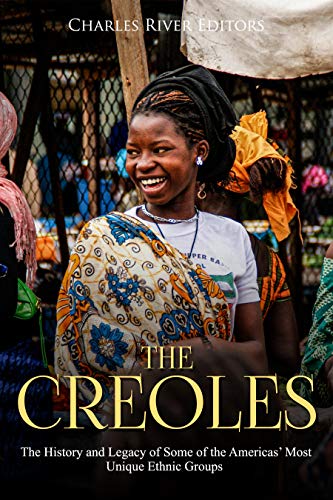The Creoles: The History and Legacy of Some of the Americas’ Most Unique Ethnic Groups
*Includes pictures*Includes a bibliography for further reading*Includes a table of contents “Little by little, the bird makes its nest.” – Old Haitian Creole Proverb Vibrant, up-tempo vocals and exquisitely soulful harmonies paired with an accordion-heavy and drum-tastic blend of folksy and bluesy instrumentals that one cannot help but tap one’s foot to. Rich and creamy,
*Includes pictures
*Includes a bibliography for further reading
*Includes a table of contents
“Little by little, the bird makes its nest.” – Old Haitian Creole Proverb
Vibrant, up-tempo vocals and exquisitely soulful harmonies paired with an accordion-heavy and drum-tastic blend of folksy and bluesy instrumentals that one cannot help but tap one’s foot to. Rich and creamy, ultra-seasoned bisques. Flavorful, aromatic gumbos packed with tomatoes, smoked sausages, chicken, and shellfish. A heavenly concoction of stewed rice and an assortment of meats and seafood, enlivened with tomatoes, celery, onions, and peppers, otherwise known as “red jambalaya.” Striking paintings featuring bright pops of color and featureless silhouettes of men, women, and children with varying shades of brown skin. These are often the first sounds, scents, tastes, and visuals evoked when the word “Creole” is brought up in a conversation.
Contrary to popular belief, the term “Creole” is not restricted to the Louisiana Creole, nor the Creoles of color, which collectively refers to the overall ethnic group and different local Creole cultures that blossomed across the Spanish and French colonies in Louisiana, Mississippi, and northwestern Florida. Today, the term is much more complex and may be applied to any of the various Creole cultures around the globe. The word may also be used to describe any language that has spawned from a mixture of languages, or specifically the associated, but distinct tongues developed within Creole communities, as well as the speakers of these languages themselves.
Generally speaking, however, the word “Creole” refers to the cultures birthed from the colonial-era racial and cultural mixing between Europeans (mostly of French, Spanish, or Portuguese descent) and Africans, as well as Native Americans, and other local or indigenous peoples in French, Spanish, and Portuguese territories. The merging of the above-mentioned heritages is a process now known as “creolization.” Indeed, the image of a caramel-skinned individual with a combination of Afrocentric, Native American, and Caucasian physical features falls within the extensive realm of “Creole culture,” but it is important to remember that the Creole peoples come in all complexions, shapes, and sizes, ranging from darker skin coupled with predominantly “African” traits and virtually no visible signs of European ancestry, to sets of blue or green eyes set amongst other ambiguously “Caucasian” characteristics. Beige-skinned individuals sculpted with an assortment of Spanish and Southeast Asian features, as seen in many of the Filipino Creole, also belong to the same category.
The Creoles: The History and Legacy of Some of the Americas’ Most Unique Ethnic Groups profiles the people, from their origins to their histories across the Americas. Along with pictures of important people, places, and events, you will learn about the Creoles like never before.
Bestsellers 2021
Auto Amazon Links: No products found.







Comments
Comments are disabled for this post.